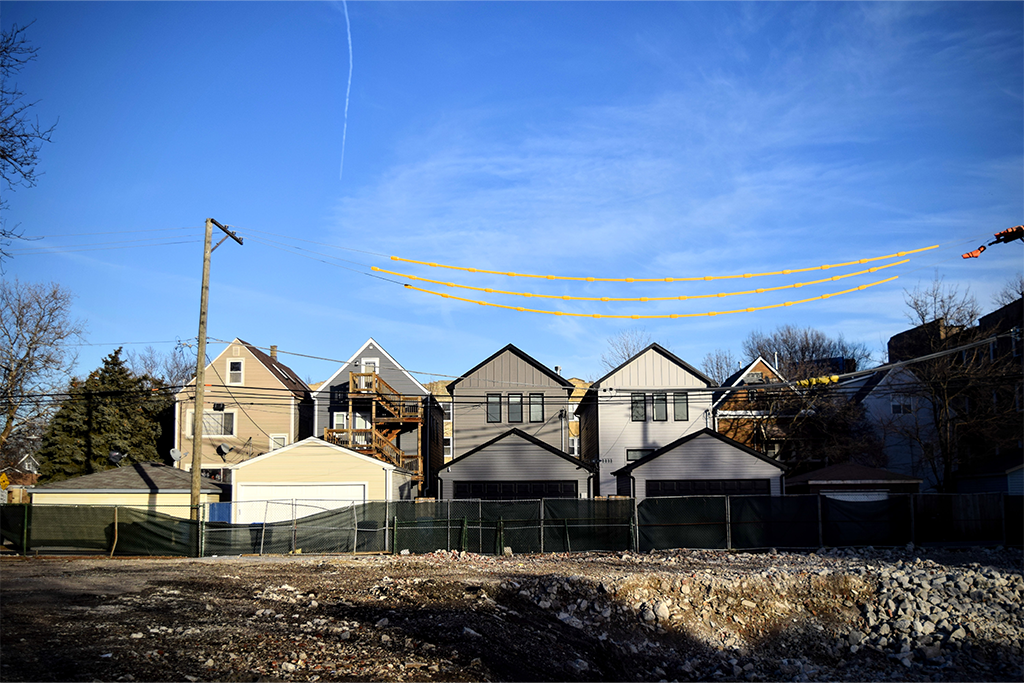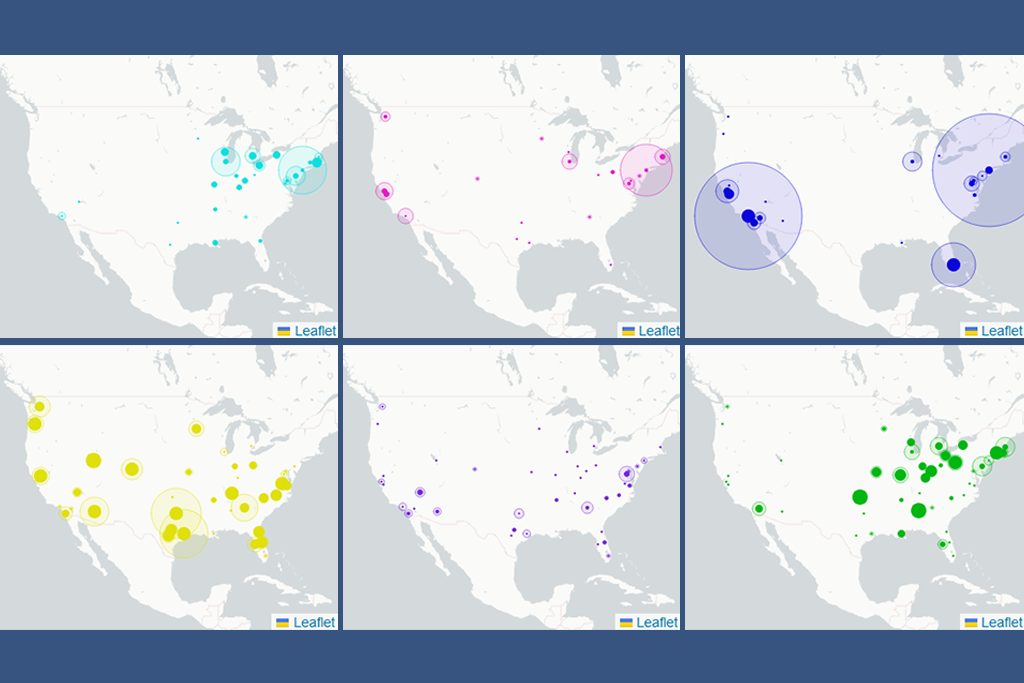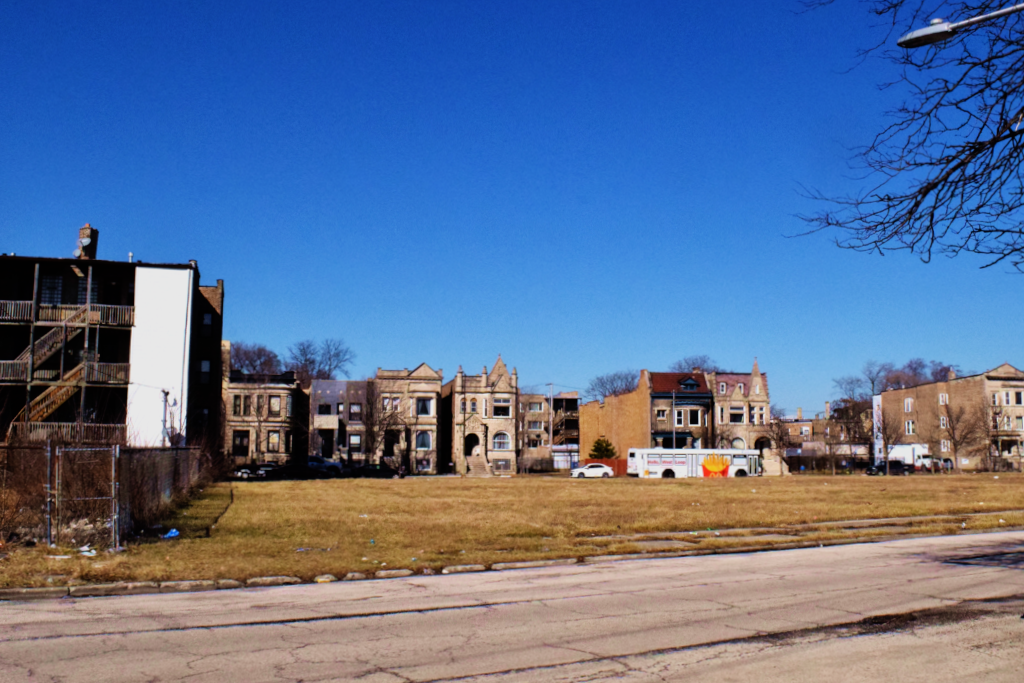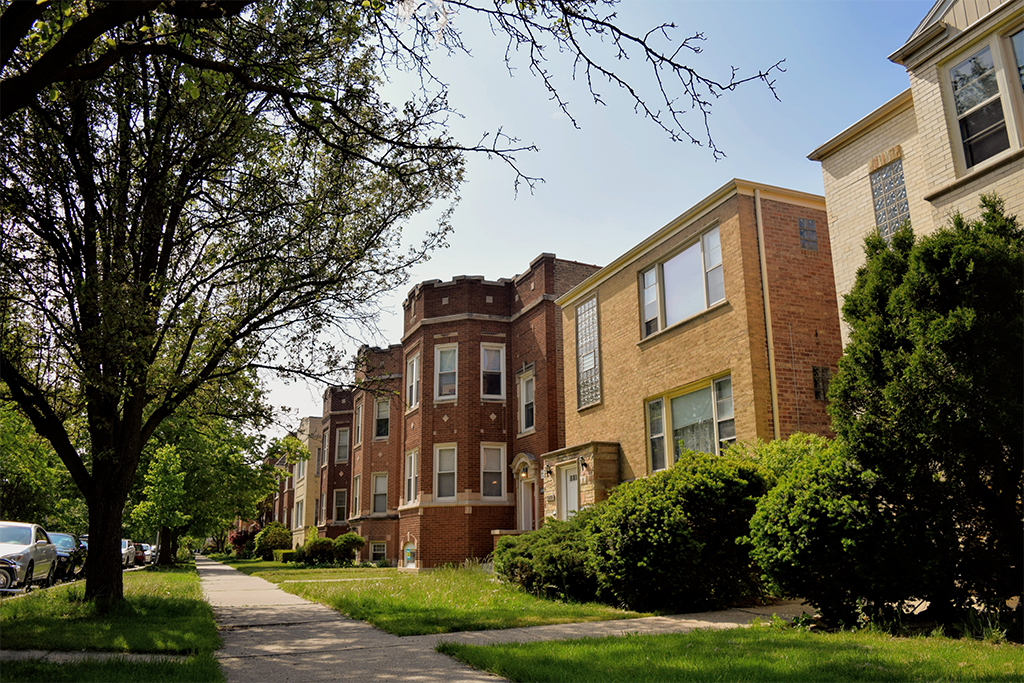Photo: Evelyn Ryan
In 2024, the State of Illinois convened the Illinois Community Land Trust Task Force to evaluate ways to support Community Land Trusts in Illinois. Community Land Trusts (CLTs) are a unique tool that provides permanently affordable housing by separating ownership of a home from the land underneath. The Task Force evaluated how CLTs could be better supported to meet the state’s affordable housing challenges. IHS Executive Director Geoff Smith was one of 15 housing experts or practitioners who made up the Task Force.
Throughout the Task Force’s six meetings in 2024, members discussed ways that CLTs can address Illinois’ current housing challenges, as well as possible State policies that can help CLTs thrive. These findings can be found in the Task Force’s final report, which was assembled by IHS staff. The report, submitted to the Governor's Office and General Assembly in December, can be read here.
Executive Summary
Illinois and the nation are experiencing significant and worsening housing affordability challenges. These struggles include a shortage of affordable homes for prospective homebuyers, increasing financial pressures for existing homeowners, and a lack of affordable units for renters. These affordability challenges disproportionately impact households and neighborhoods of color across the state, can lead to increased housing instability and displacement pressure in these communities, and can be intensified by localized market forces such as gentrification and long-term disinvestment.
In May 2023, the Illinois General Assembly passed the Community Land Trust Task Force Act, which assembled a group of experts to evaluate how Community Land Trusts (CLTs) could be better supported to meet these affordable housing challenges. The Task Force included elected officials, State employees, researchers, national experts, and representatives from active Illinois CLTs. Throughout meetings, the Task Force identified challenges impacting Community Land Trust operations, capacity, and reach, and developed recommendations for policymakers to increase the effectiveness of CLTs in Illinois.
About Community Land Trusts
A Community Land Trust is a useful and comparatively cost-effective tool that complements the existing landscape of affordable housing programs by creating permanent affordability and a mechanism for wealth creation for homeowners.
In a typical Community Land Trust, the cost of housing is lowered by separating ownership of the home structure from the land underneath. The CLT, a nonprofit organization, owns the land and retains its ownership when the home is sold to a buyer and when the home is sold in subsequent transactions. This process allows the CLT to "steward" the property from one owner to the next. To ensure the home remains affordable over time, CLTs use a ground lease to limit the resale price, keeping the home affordable in perpetuity.
Community Land Trusts typically set income limits for new buyers to ensure that affordable homes are sold to low- or moderate-income households. After purchasing, CLT homeowners build wealth through the equity accumulated through mortgage payments as well as through a portion of the property's appreciation when the homeowner sells. However, to maintain the home’s long-term affordability, the amount of appreciation a homeowner can capture upon sale is capped by a resale formula. Although a CLT homeowner builds less wealth compared to traditional homeownership, this approach ensures that the home remains perpetually affordable for future buyers. This approach is distinct from many affordable housing units created through other subsidy programs, which could be lost once the subsidy expires.
By removing the cost of land for new buyers, Community Land Trusts preserve community-level housing affordability by functioning as an anti-speculation tool in gentrifying markets and by fostering stability in historically disinvested markets. In all types of neighborhoods, CLTs can ensure that as neighborhoods improve, current residents can share in the benefits rather than being pushed out by rising costs.
Recommendations from the Community Land Trust Task Force
Challenge: Consistent and Sufficient Funding and Inventory
One of the primary barriers impacting the ability of CLTs to meet the growing affordable housing needs in the state is a lack of consistent, sufficient, and flexible funding and incompatibility with existing subsidy programs. Additionally, CLTs struggle with inconsistent methods of bringing new homes into a Community Land Trust.
Task Force Recommendations:
- Create a line item in the State budget for dedicated funding to support CLTs
- Increase the number of State grants for organizational capacity-building and housing development, with spending rules tailored to the needs of CLTs
- Promote innovative sources of dedicated funding and property for CLTs
- Leverage rising industry and catalytic projects to generate revenue for lasting affordable housing
- Encourage partnerships between CLTs and land banks
- Consider incorporating CLTs into local tax sale processes
Challenge: Operational Efficiency and Organizational Capacity
CLTs are non-profit organizations that require extensive start-up support and ongoing administrative costs, which makes them difficult to start or expand. Many new and smaller CLTs face barriers when attempting to access government grants, acquire and redevelop CLT properties, and manage CLT inventories.
Task Force Recommendations:
- Provide technical assistance support to CLTs
- Improve communication between the State government and local CLTs
- Evaluate different approaches to CLT centralization
Challenge: Broad Awareness, Outreach, and Partnerships
Recognition from lenders, individuals, and assessors is necessary for CLTs to expand into parts of the state where they aren’t already established. Additionally, if CLTs are to grow either within current areas of operation or in other parts of the state, broad awareness of CLTs' mission and structure is essential.
- Ensure that existing and future homeownership assistance programs are aligned with the CLT ownership structure
- Earmark funds for a targeted public awareness campaign
- Ensure statewide use of existing tax assessment language and adjust policy to ease burdens on CLTs and CLT owners
To learn more about the findings of the Task Force and its recommendations, read the full report here.






